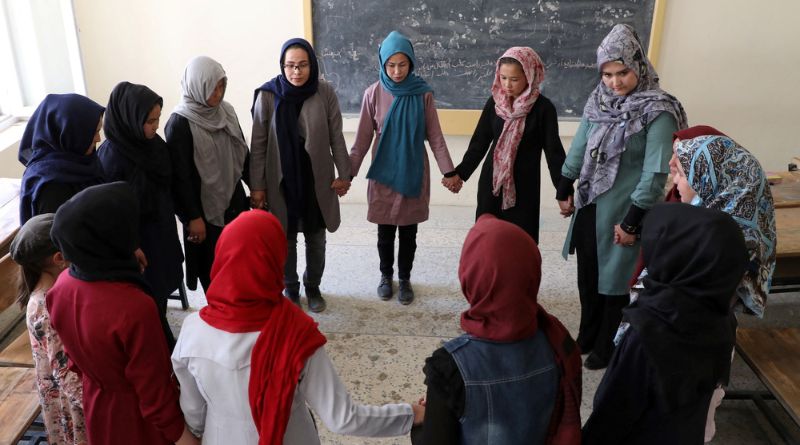The situation for women under the Taliban regime has been a topic of significant concern and debate since the group regained control of Afghanistan in August 2021. The Taliban’s return to power has raised pressing questions about the rights and freedoms of women in the country. This article aims to provide an informative overview of the challenges and developments faced by Afghan women under Taliban rule, as well as insights into their resilience and activism.
Table of Contents
Historical Context
To understand the current situation of women under the Taliban, it is crucial to examine the historical context. The Taliban first ruled Afghanistan from 1996 to 2001, during which time they imposed strict interpretations of Islamic law. Women were largely excluded from public life; they were forbidden from attending school, working, or leaving their homes without a male guardian.
Following the U.S.-led invasion in 2001, Afghan women made significant strides in education, employment, and participation in public life. Women were allowed to attend school, work in various sectors, and participate in politics. However, the return of the Taliban in 2021 has led to a rapid reversal of many of these gains.
Current Situation
Restrictions on Education and Employment
Since the Taliban’s takeover, women and girls have faced numerous restrictions:
- Education: The Taliban initially promised to allow girls to attend school. However, by March 2022, secondary schools for girls were closed indefinitely. Many girls are now denied access to education, with reports of ongoing protests and advocacy efforts by women demanding their right to learn.
- Employment: Women are largely barred from working in many sectors, particularly in government and public roles. This has significantly impacted their ability to provide for themselves and their families.
- Public Life: The Taliban has imposed dress codes, requiring women to wear burqas or hijabs in public. Women are also discouraged from leaving their homes without a male guardian, severely limiting their mobility and independence.
Social and Psychological Impact
The restrictions imposed by the Taliban have had profound psychological effects on Afghan women:
- Isolation: Many women feel trapped and isolated due to the lack of freedom to move outside their homes. This isolation can lead to mental health issues, including anxiety and depression.
- Fear of Violence: Women face a heightened risk of violence, including domestic abuse, as they are often trapped in their homes with abusers. The lack of legal recourse or support services exacerbates their vulnerability.
- Stigmatization: Women who resist the Taliban’s restrictions or speak out against the regime may face retaliation, including imprisonment or violence.
Resilience and Activism
Despite the oppressive conditions, many Afghan women have demonstrated remarkable resilience and courage. Activists continue to advocate for women’s rights, often at great personal risk.
- Protests: Women have organized protests demanding their rights, often facing violent crackdowns from Taliban forces. These demonstrations highlight the determination of Afghan women to reclaim their freedoms.
- International Support: Numerous organizations and activists worldwide have rallied to support Afghan women, providing resources, raising awareness, and advocating for their rights on international platforms.
- Underground Education: In some areas, clandestine schools have emerged, where women and girls gather to receive education in secret, defying Taliban restrictions.
International Response
The international community has largely condemned the Taliban’s treatment of women. Countries and organizations have called for the restoration of women’s rights in Afghanistan, linking humanitarian aid to the Taliban’s commitment to gender equality. However, the effectiveness of these measures remains uncertain, as the Taliban’s leadership appears resistant to external pressure.
FAQs About Taliban Women
1. What is the current situation for women in Afghanistan under the Taliban?
Women in Afghanistan face severe restrictions on their rights, including access to education and employment. Many are prohibited from leaving their homes without a male guardian and must adhere to strict dress codes.
2. Are girls allowed to attend school?
As of now, secondary schools for girls remain closed indefinitely. The Taliban has stated they are working on a solution, but many girls have been unable to return to education since their takeover.
3. What forms of activism are Afghan women engaging in?
Afghan women are actively protesting against the Taliban’s restrictions, often facing violent reprisals. They are also forming underground schools to continue education and raising awareness internationally about their plight.
4. How is the international community responding to the situation?
Many countries and organizations have condemned the Taliban’s actions and are advocating for women’s rights in Afghanistan. Some have linked humanitarian aid to the Taliban’s commitment to gender equality.
5. What can be done to support Afghan women?
Supporting Afghan women can involve raising awareness about their situation, providing financial assistance to organizations that advocate for their rights, and pressing governments to take action against human rights violations in Afghanistan.
Conclusion
The plight of women under Taliban rule in Afghanistan is a complex and troubling reality that calls for urgent attention and action. While the regime has imposed severe restrictions, the resilience and courage of Afghan women continue to shine through. They remain determined to fight for their rights and freedoms, inspiring hope for a future where gender equality is achieved. The international community must remain vigilant in supporting these women, ensuring their voices are heard, and their rights are upheld.






